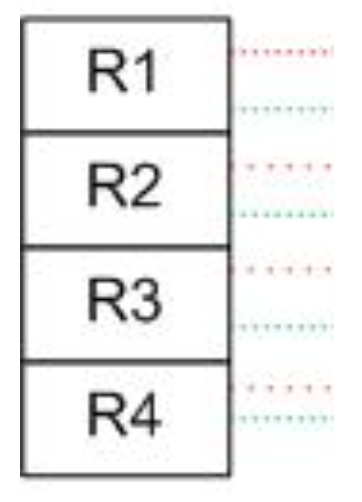9.1: Introduction
- Page ID
- 27002
This chapter introduces the last IC needed for a CPU, memory. For example 4 memory cells, or registers, on a CPU may be labeled R1..R4. In this chapter how these memory locations store data will be explained.

Up to this point in this text all of the circuits are simple, or non-sequential, circuits. These circuits are called simple because the current is applied and the circuit takes on a set of values specified by the Boolean function for the circuit. The circuits have no state, or memory, of what previous values the circuit had. In order to do interesting things, like running programs, a computer must have state.
The state of a circuit is the values of all memory which is stored. State is maintained in memory, and memory is just a place to store the values that make up the state. Circuits that contain state elements (memory) are called sequential circuits. This chapter will show how memory is implemented in hardware.


